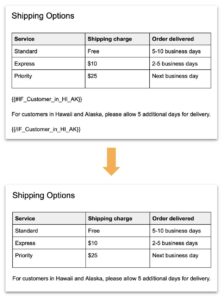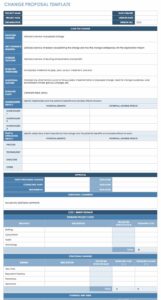Utilizing such a framework fosters better communication among stakeholders, simplifies tracking progress, and reduces errors during implementation. It promotes a more efficient and controlled approach to managing evolving business needs reflected within the Salesforce platform. This leads to improved transparency, accountability, and ultimately, a smoother transition process for all involved.
This article will explore the key components of these documents, different types available for various scenarios, and best practices for their effective use. It will also delve into how these structured approaches contribute to successful Salesforce deployments and ongoing maintenance.
Key Components of a Salesforce Change Request Document
Effective management of Salesforce modifications requires a structured approach. Key components within a formalized request ensure clarity, completeness, and facilitate proper evaluation and implementation.
1. Request Title/Summary: A concise, descriptive title summarizes the proposed change. This allows for quick identification and understanding of the request’s purpose.
2. Description of Change: A detailed explanation of the proposed modification, including the specific functionalities or data affected, is essential. This clarifies the scope and nature of the change.
3. Justification/Business Reason: This section articulates the business need driving the requested change. It explains the “why” behind the modification, linking it to strategic goals or operational requirements.
4. Impact Assessment: A thorough analysis of potential impacts, both positive and negative, is crucial. This includes considering effects on existing workflows, integrations, and user experience.
5. Implementation Plan: This section outlines the technical steps required to implement the change. It may include details on coding, configuration, testing, and deployment procedures.
6. Rollback Plan: A contingency plan for reverting the change if issues arise after implementation is critical. This minimizes disruption and ensures business continuity.
7. Testing and Validation: Defining the testing procedures to validate the change before deployment ensures quality assurance. This includes specifying test cases and acceptance criteria.
8. Approvals: Clearly defined approval processes ensure appropriate stakeholders review and authorize the change before implementation. This ensures alignment with organizational guidelines and governance policies.
Structured requests enable efficient evaluation, minimize risks, and ensure successful implementation of modifications within the Salesforce environment. These components contribute to a robust change management process, promoting stability and minimizing disruption.
How to Create a Salesforce Change Request Document
Creating a standardized document ensures clarity and consistency in managing Salesforce modifications. The following steps outline the process of developing a comprehensive template.
1: Define the Scope: Determine the specific areas the template will cover. This may include configurations, customizations, integrations, or other Salesforce modifications. A clearly defined scope ensures the template’s relevance and usability.
2: Establish Key Fields: Identify the essential information required for each request. This typically includes a title, description, justification, impact assessment, implementation plan, rollback plan, testing procedures, and approval sections. Each field contributes to a complete understanding of the proposed change.
3: Design the Layout: Structure the template logically to facilitate easy navigation and data entry. Consider using tables, headings, and clear labels to enhance readability and organization. A well-structured layout promotes efficient processing and review.
4: Incorporate Approval Workflows: Integrate the necessary approval stages within the template or associated system. This ensures that changes are reviewed and authorized by appropriate stakeholders before implementation. A defined approval process enforces governance and accountability.
5: Pilot and Refine: Test the template with a small group of users to identify any areas for improvement. Gather feedback on usability and effectiveness, and revise the template accordingly. Piloting ensures practicality and optimizes the template for broader use.
6: Train and Communicate: Educate users on the template’s purpose, usage, and associated processes. Provide clear instructions and documentation to ensure consistent application. Thorough training promotes adoption and maximizes the template’s benefits.
7: Regularly Review and Update: Periodically review the template to ensure its continued effectiveness and alignment with evolving business needs. Update the template as necessary to reflect changes in processes or technologies. Regular review maintains relevance and optimizes ongoing use.
A well-designed template promotes clear communication, streamlines the change management process, and reduces the risk of errors during Salesforce modifications. This contributes to a more efficient and controlled approach to managing platform updates and enhancements.
Formalized structures for managing Salesforce modifications provide a critical foundation for successful implementations and ongoing platform maintenance. Standardized documentation ensures clarity, facilitates communication among stakeholders, and minimizes the risk of errors during implementation. From outlining the proposed change and its justification to defining the implementation plan and rollback strategy, a comprehensive approach promotes efficiency and control throughout the entire change lifecycle.
Effective change management is essential for maximizing the value of the Salesforce platform. By embracing structured approaches, organizations can ensure smoother transitions, minimize disruption, and achieve greater agility in adapting to evolving business needs. Ultimately, this disciplined approach fosters a more robust and reliable Salesforce environment, enabling organizations to leverage the platform’s full potential.


